Lombok's #1 Tourism Magazine
You can see Bali in Lombok… but you can’t see Lombok in Bali!
This old Lombok saying is especially true during Nyepi – the Balinese Hindu “Day of Silence” – when you really can see Bali in Lombok!
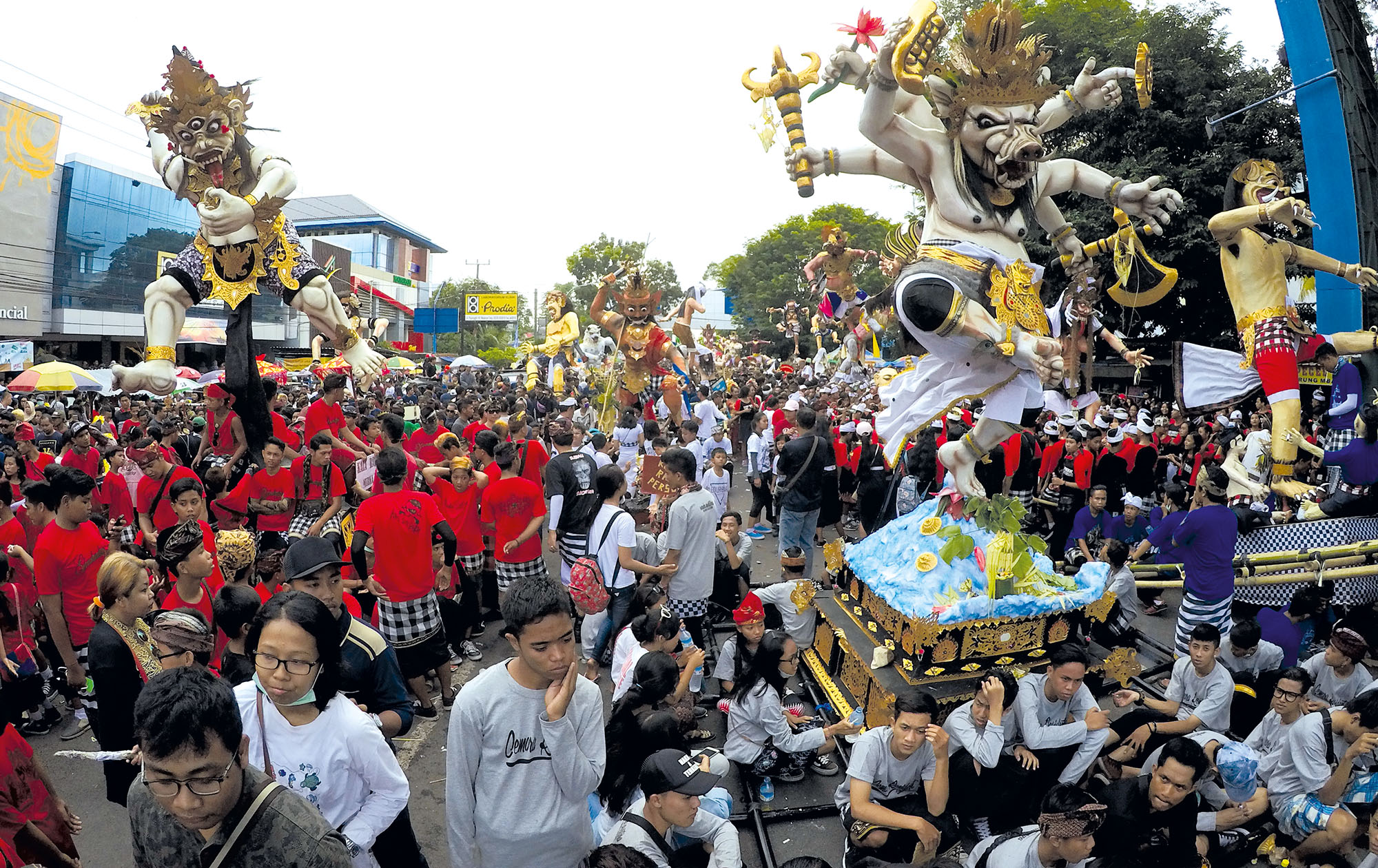 Many people assume that Balinese Hindus only live in Bali but, with the two islands being so close together, Balinese settlement in Lombok dates back for centuries. Today, Balinese communities and temples are found all around the west coast and in the cities of Lombok.
Many people assume that Balinese Hindus only live in Bali but, with the two islands being so close together, Balinese settlement in Lombok dates back for centuries. Today, Balinese communities and temples are found all around the west coast and in the cities of Lombok.
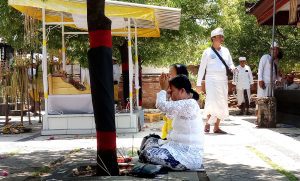 Nyepi is one of the most important days in the Balinese calendar and the start of the Hindu New Year. However, Balinese Hindus do not celebrate the new year with lavish parties; they celebrate it with peace and meditation instead, with the aim of entering a new year with a “clean slate”.
Nyepi is one of the most important days in the Balinese calendar and the start of the Hindu New Year. However, Balinese Hindus do not celebrate the new year with lavish parties; they celebrate it with peace and meditation instead, with the aim of entering a new year with a “clean slate”.
Nyepi in Bali is observed by a “day of silence” based on four guiding principles called Catur Berata Penyepian. These four principles specify:
Amati Geni: Prohibiting the lighting of fires, the use of lighting or the satisfaction of pleasurable human appetites.
Amati Karya: Prohibiting all forms of physical work other than those dedicated to spiritual cleansing and renewal.
Amati Lelungan: No journeys or travel; people are required to stay within their residences.
Amati Lelanguan: Prohibiting all forms of entertainment, recreation or general merry-making.
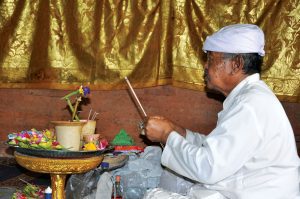 In keeping with the strict traditions of this holy day, activities will grind to a halt in Bali for 24 hours – from 6.00am until 6.00am on the following day.
In keeping with the strict traditions of this holy day, activities will grind to a halt in Bali for 24 hours – from 6.00am until 6.00am on the following day.
Bali’s airport will be closed for both international and domestic travel during Nyepi and all seaports that connect to Bali are also closed.
No passengers are allowed to land or take off from the airport and ports and, although some technical stops may be allowed, no passenger may disembark or embark during this period.
Domestic flights between Ngurah Rai Airport (Bali) and Lombok International Airport will not operate on Nyepi, nor will public ferries between Padang Bai Harbour (Bali) and Lembar Harbour (Lombok).
If you are planning a trip to Lombok, make sure you leave Bali at least the day before Nyepi and be sure to book transfers and accommodation well in advance, as many people travel to Lombok and the Gilis during Nyepi.
In Bali, for the 24 hours of Nyepi, hotels are not allowed to check-in or check-out guests. No shops or restaurants are open, and visitors are required to stay within the grounds of their hotels and not leave the premises, except in cases of medical emergency.
Hotels are asked to limit outside lighting out of respect to the surrounding Balinese communities. Guests are asked to keep noise at a minimum. All businesses are closed and the streets are empty. Taxis do not operate on Nyepi and only emergency vehicles are permitted on the roads.
The situation is different in Lombok, where the community is made up of a mixture of Muslims, Hindus, Buddhists, Christians and other religions.
Of course, Lombok’s Hindu community observes Nyepi but the restrictions are not enforced in Lombok and this quiet time of no noise, lights, travel or work only takes place in the Hindu communities.
Most visitors to Lombok would be unaware of Nyepi practices as shops, restaurants and businesses are open and everything on the island operates as on any normal day.
Pawai Ogoh-ogoh
However, there is one Nyepi tradition that draws the attention of both Lombok’s residents and visitors; this is when Lombok’s Hindu community participate in Ngerupuk or the “Ogoh-ogoh Parade”.
The parade takes place on the day before Nyepi, and is an exciting and noisy procession of fantastic monsters that dance and twist their way along the main streets of Lombok’s capital city, Mataram.
“Ogoh-ogoh” is the name given to the giant monsters representing Hindu creatures of the underworld (known in Balinese as buta kala).
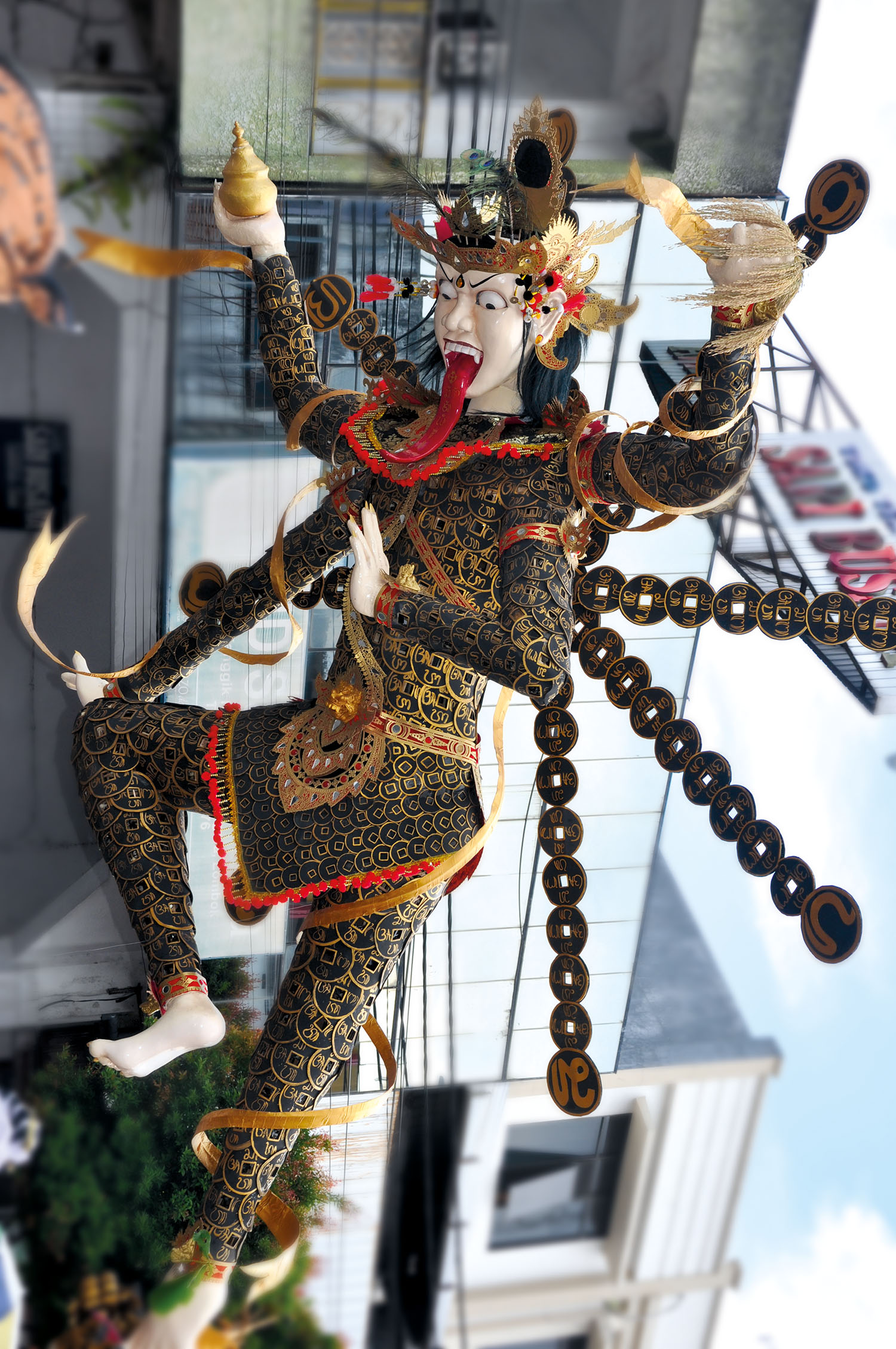
Ogoh-ogoh are usually based on evil characters or spirits taken from traditional myths and legends, although more modern monsters include effigies of political characters, or symbolic representations of “the demon within” and evil temptations in the modern world.
In the months before Nyepi, the Hindu community starts to plan their Ogoh-ogoh creations. If you drive around the back streets of Mataram and Cakra over the next couple of weeks, you will see these huge constructions taking shape by the side of the roads.
Each Balinese village, even those in Lombok, is run by a Banjar, a community council that supports and maintains the temples and village environment; as well as mediating problems in the village, etc.
In preparation for Nyepi, the Banjar collects money, often with other smaller communities joining with a bigger one to create Ogoh-ogoh together.
The people work together to create the monsters, using bamboo and wire frames, papier-mâché, polystyrene and other materials. Sometimes special artisans are brought in from Bali, gifted in monster making and hired to produce the amazing statues.
They are often works of art that have taken many hours to create. A simple Ogoh-ogoh may cost as little as Rp 1 million to make, but more elaborate figures can cost millions.
The young people of the villages take great delight in competing with other villages to create the most gruesome, terrifying or eye-catching Ogoh-ogoh.
The parade of the Ogoh-ogoh, although a fun and popular event for spectators, is in fact an important ceremony in preparation for Nyepi; representing a type of mass exorcism of evil in order to start the Hindu New Year spiritually pure and clean.
Before the parade, a pemangku (temple priest) holds a ceremony to imbue the buta kala with spirit and power. Some say the monster gets heavier after this ceremony!
The Ogoh-ogoh is then placed on a bamboo frame, so that many people can help to carry it, making wild movements and dancing to bring the monster to life. Groups of people in traditional dress join the parade, taking turns to carry the heavy figures and dancing alongside their Ogoh-ogoh.
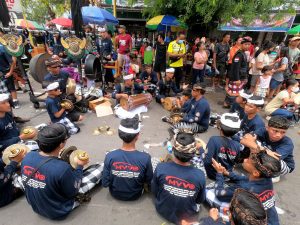
Musical groups, gamelan players and dancers in costume often accompany their monster, creating a spectacle of sound and drama.
As evil spirits are believed to inhabit crossroads, particular attention is paid to each intersection, with the Ogoh-ogoh lurching and dancing wildly in the middle of the road to scare off any other evil spirits lurking there.
The parade travels along Jl Pejanggik, the main street in Mataram, and usually involves more than a hundred Ogoh-ogoh and thousands of spectators.
The monsters are then paraded to the Jagadnata Temple in Cakra, or home to their respective Banjar, where they will often be burned in a ritual symbolising the destruction of evil (although these days some of the more elaborate creations are no longer being destroyed).
Most importantly, the Ogoh-ogoh parade has become a multi-cultural event in Lombok, with the whole community joining in the excitement.
It’s not unusual to see Muslim groups and Gendang Beleq troupes playing the big drums of Lombok – and even Chinese Lion Dancers and Hare Krishna groups – marching and laughing alongside the Hindu groups with their monsters.
If you would like to see the parade, join the crowds in the afternoon on the day before Nyepi at around 2pm along Jalan Pejanggik (the main street of Mataram, near Mataram Mall).
The Ogoh-ogoh parade is a fascinating event, full of music, dance, fun and excitement. Spectators are always welcome… be sure to take your camera!